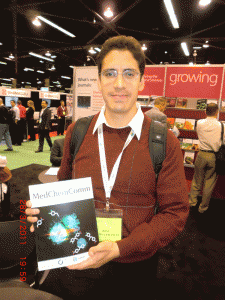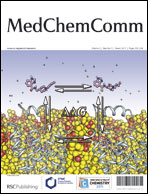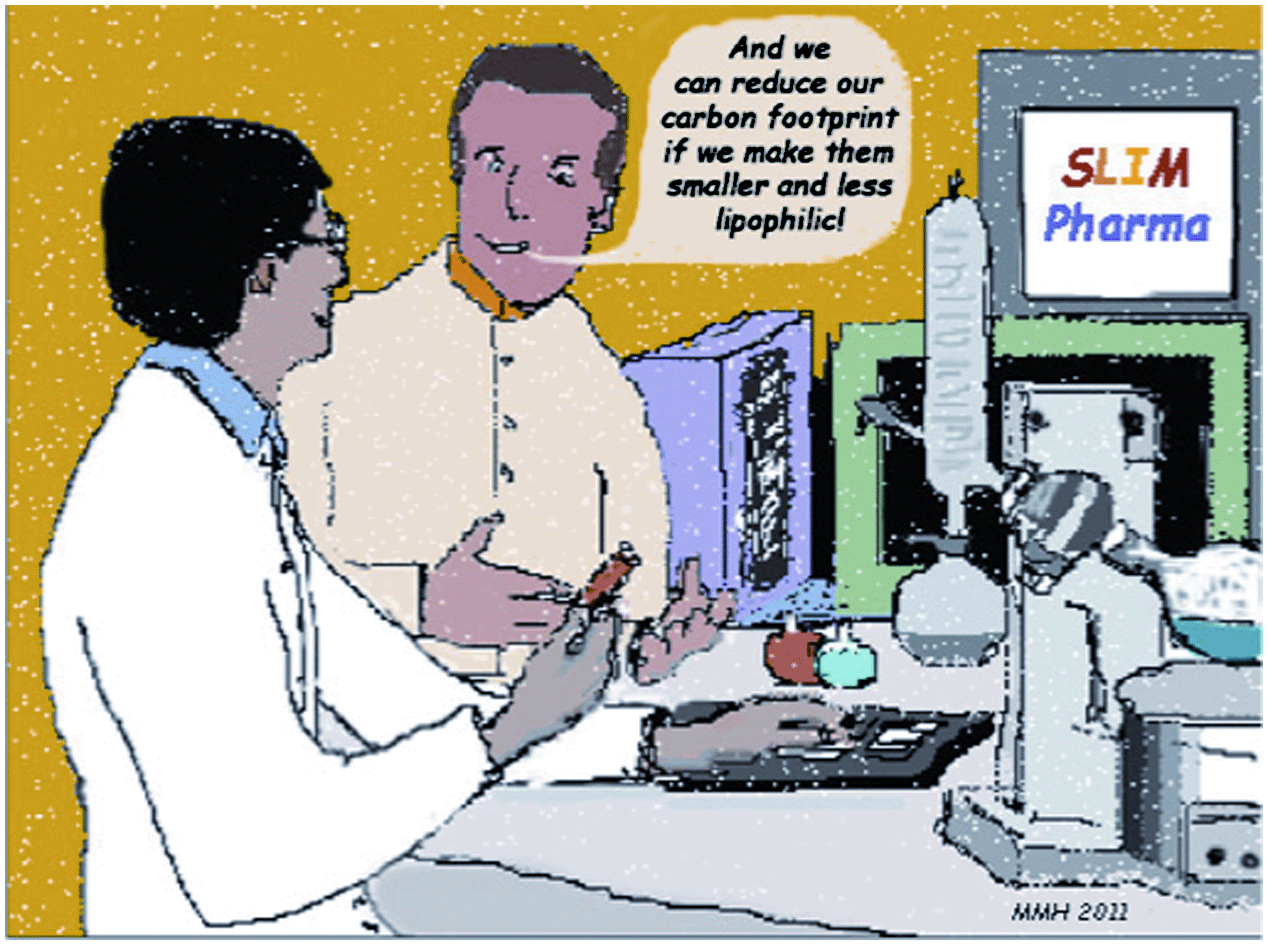This month sees the following articles in MedChemComm that are in the top ten most accessed:-
Molecular obesity, potency and other addictions in drug discovery
Michael M. Hann
Med. Chem. Commun., 2011, Advance Article DOI: 10.1039/C1MD00017A, Review
Synthesis and SAR studies of benzimidazole derivatives as melanin concentrating hormone receptor 1 (MCHR1) antagonists: Focus to detune hERG inhibition
Pradip K. Sasmal, Sanjita Sasmal, Chandrasekhar Abbineni, B. Venkatesham, P. Tirumala Rao, M. Roshaiah, Ish Khanna, V. J. Sebastian, J. Suresh, Manvendra P. Singh, Rashmi Talwar, Dhanya Shashikumar, K. Harinder Reddy, Thomas M. Frimurer, Øystein Rist, Lisbeth Elster and Thomas Högberg
Med. Chem. Commun., 2011, Advance Article DOI: 10.1039/C1MD00015B, Concise Article
Novel indolizine compounds as potent inhibitors of phosphodiesterase IV (PDE4): structure-activity relationship
Shoujun Chen, Zhiqiang Xia, Masazumi Nagai, Rongzhen Lu, Elena Kostik, Teresa Przewloka, Minghu Song, Dinesh Chimmanamada, David James, Shijie Zhang, Jun Jiang, Mitsunori Ono, Keizo Koya and Lijun Sun
Med. Chem. Commun., 2011, 2, 176-180 DOI: 10.1039/C0MD00215A, Concise Article
The discovery of a novel prototype small molecule TLR7 agonist for the treatment of hepatitis C virus infection
David C. Pryde, Thien-Duc Tran, Peter Jones, Gemma C. Parsons, Gerwyn Bish, Fiona M. Adam, Mya C. Smith, Donald S. Middleton, Nick N. Smith, Frederick Calo, Duncan Hay, Michael Paradowski, Katie J. W. Proctor, Tanya Parkinson, Carl Laxton, David N. A. Fox, Nigel J. Horscroft, Giuseppe Ciaramella, Hannah M. Jones, Jonathan Duckworth, Neil Benson, Anthony Harrison and Rob Webster
Med. Chem. Commun., 2011, 2, 185-189 DOI: 10.1039/C0MD00197J, Concise Article
Discovery and pharmacological characterization of a selective delta opiate receptor antagonist (CP-646,777)
Spiros Liras, Stanton F. McHardy, Martin P. Allen, Barb E. Segelstein, Steven D. Heck, Dianne K. Bryce, Anne W. Schmidt, Rebecca O’Connor, Michelle Vanase-Frawley, Ernesto Callegari and Stafford McLean
Med. Chem. Commun., 2011, Advance Article DOI: 10.1039/C0MD00249F, Concise Article
The importance of solvation in the design of ligands targeting membrane proteins
Angel González, Marta Murcia, Bellinda Benhamú, Mercedes Campillo, María L. López-Rodríguez and Leonardo Pardo
Med. Chem. Commun., 2011, 2, 160-164 DOI: 10.1039/C0MD00258E, Concise Article
The p53-MDM2/MDMX axis – A chemotype perspective
Kareem Khoury, Grzegorz M. Popowicz, Tad A. Holak and Alexander Dömling
Med. Chem. Commun., 2011, 2, 246-260 DOI: 10.1039/C0MD00248H, Review
Chemical space as a source for new drugs
Jean-Louis Reymond, Ruud van Deursen, Lorenz C. Blum and Lars Ruddigkeit
Med. Chem. Commun., 2010, 1, 30-38 DOI: 10.1039/C0MD00020E, Review
Tacrine-mefenamic acid hybrids for inhibition of acetylcholinesterase
Joshua J. Bornstein, Todd J. Eckroat, Jacob L. Houghton, Christopher K. Jones, Keith D. Green and Sylvie Garneau-Tsodikova
Med. Chem. Commun., 2011, Advance Article DOI: 10.1039/C0MD00256A, Concise Article
Synthesis, in silico screening and bioevaluation of dispiro-cycloalkanones as antitubercular and mycobacterial NAD+-dependent DNA ligase inhibitors
Rama P. Tripathi, Jyoti Pandey, Vandana Kukshal, Arya Ajay, Mridul Mishra, Divya Dube, Deepti Chopra, R. Dwivedi, Vinita Chaturvedi and Ravishankar Ramachandran
Med. Chem. Commun., 2011, Advance Article DOI: 10.1039/C0MD00246A, Concise Article
Why not take a look at the articles today and blog your thoughts and comments below.
Fancy submitting an article to MedChemComm? Then why not submit to us today or alternatively email us your suggestions.













